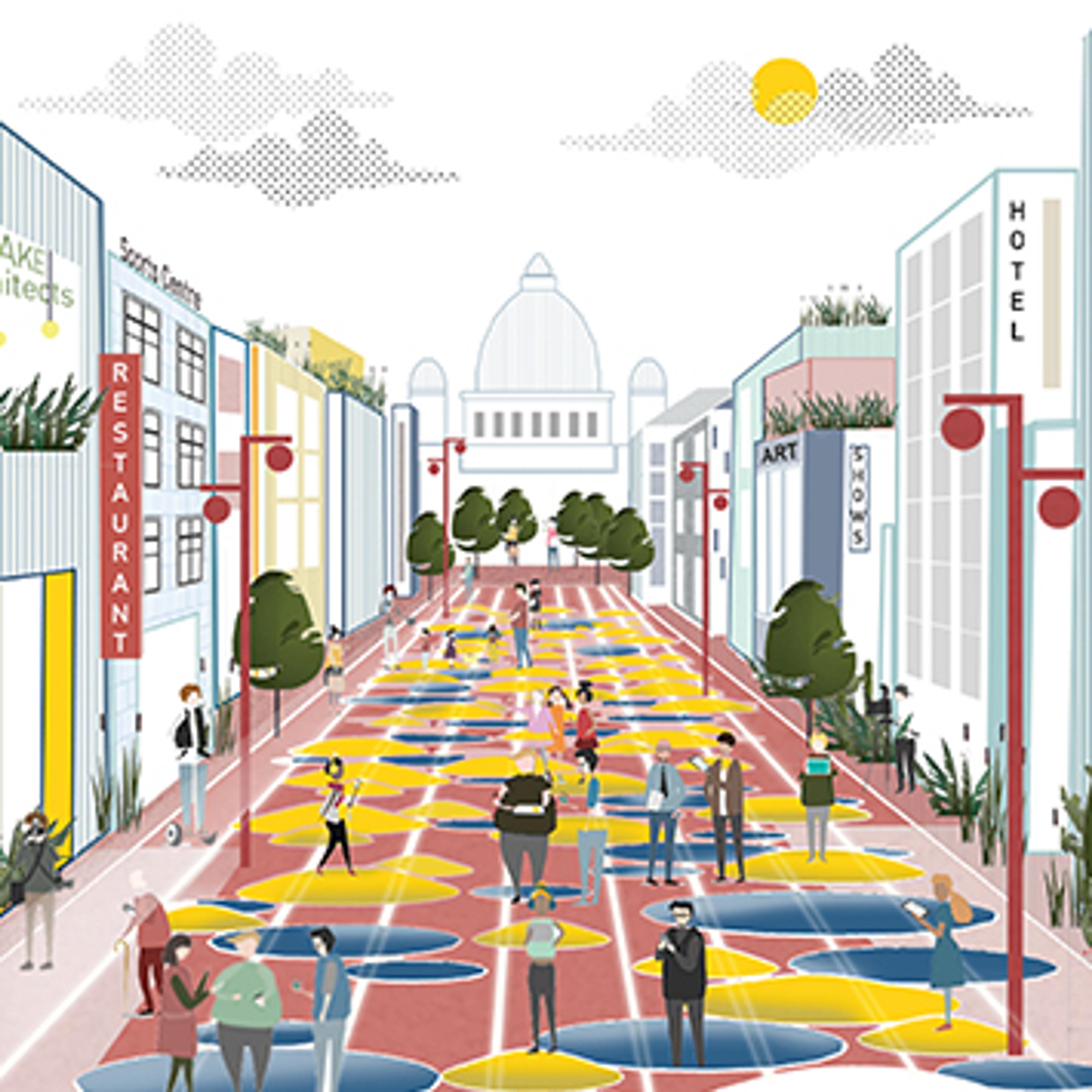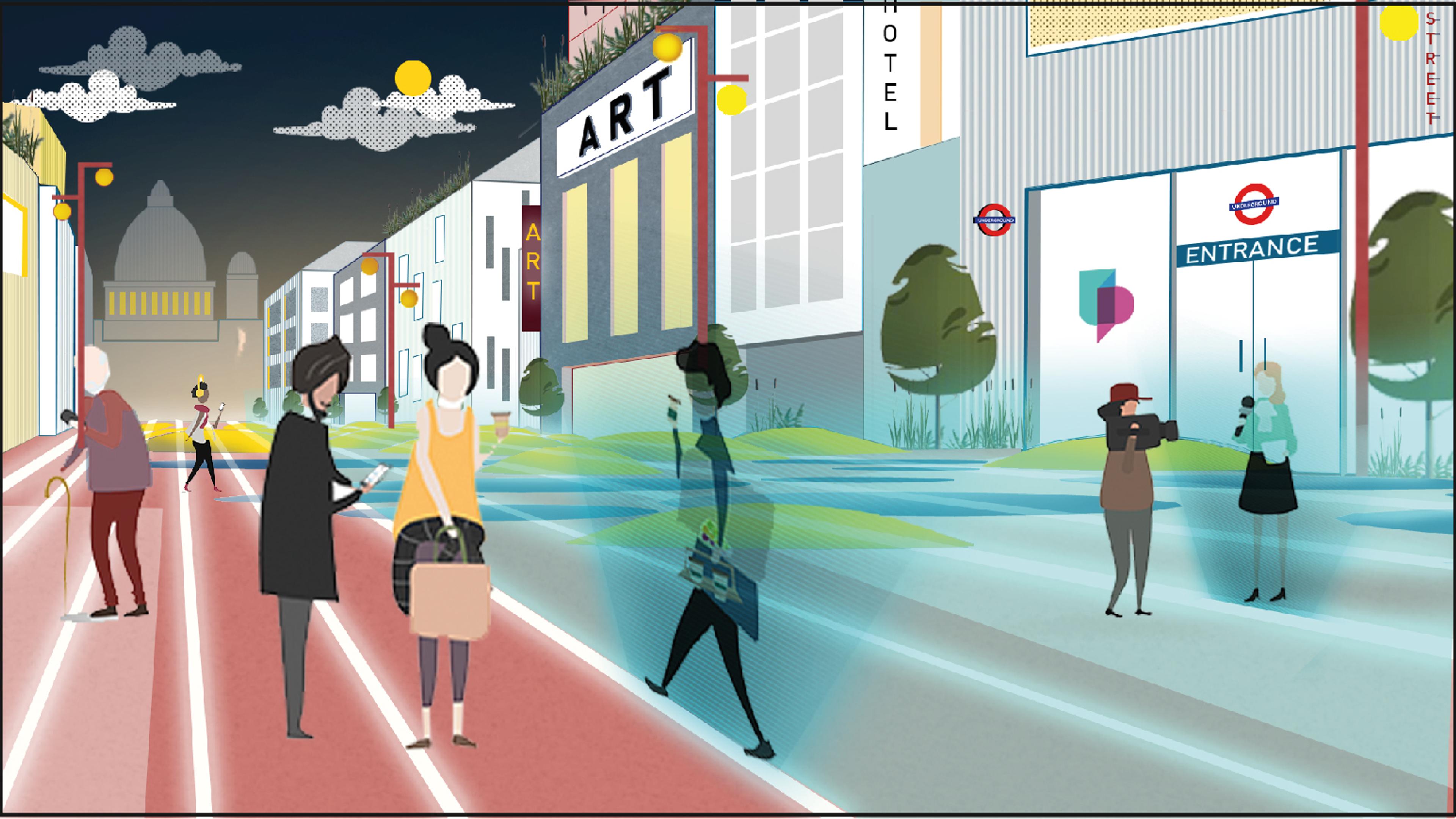Communication
University of Portsmouth
Ahmad AB Gafa, Naimi Faris, Chaer Shean Lee, Ker Neng Peh, Felicia Tiong
We envision a future social space that is technologically equipped to enable people to interact without physically communicating – an artificial intelligence-powered, emotion-sensing street. With the integration of sensors, segments of the street inflate or deflate according to the emotions of the individuals using it.
The emotion-sensing street is able to convert the kinetic energy of the public into storable electrical energy for the London Underground. Sensors detect emotion, which then simulates the movement of the ground through artificial intelligence, with segments of the street rising or sinking depending on whether the emotions detected are positive or negative, respectively. When an individual notices another experiencing a negative mood, the ground will sink and they can approach and comfort the person directly.
Light strips embedded in the street project images via an integrated hologram system depending on the emotions sensed. Meanwhile, a 3D-printed exoskeleton below the street surface generates energy through compressions, adding an element of sustainability to the scheme.
This ever-changing motion of the street creates an indirect relationship between the users of the street.



